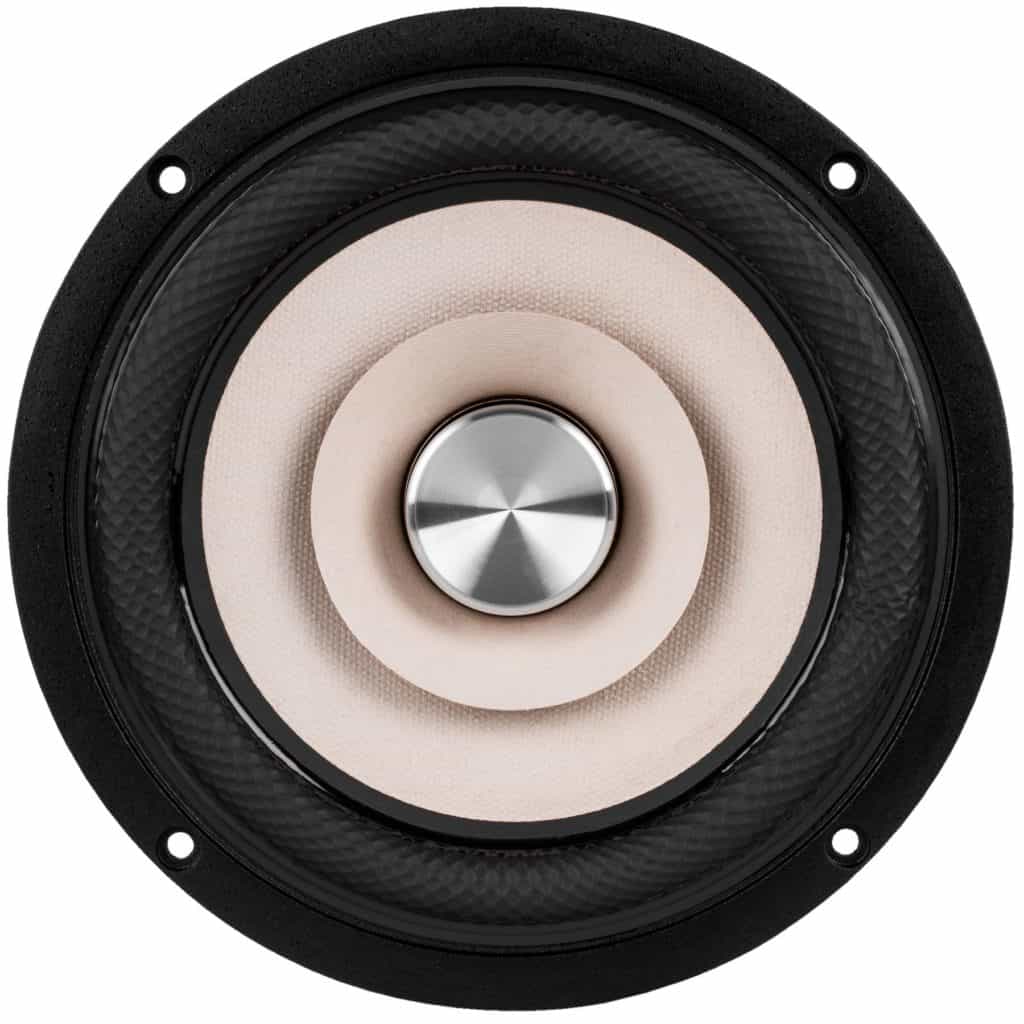Is your hi-fi investment giving you a boomy bass headache? We’ve got the news you want to hear. GARY STEEL quizzes audio expert Paul Quilter.
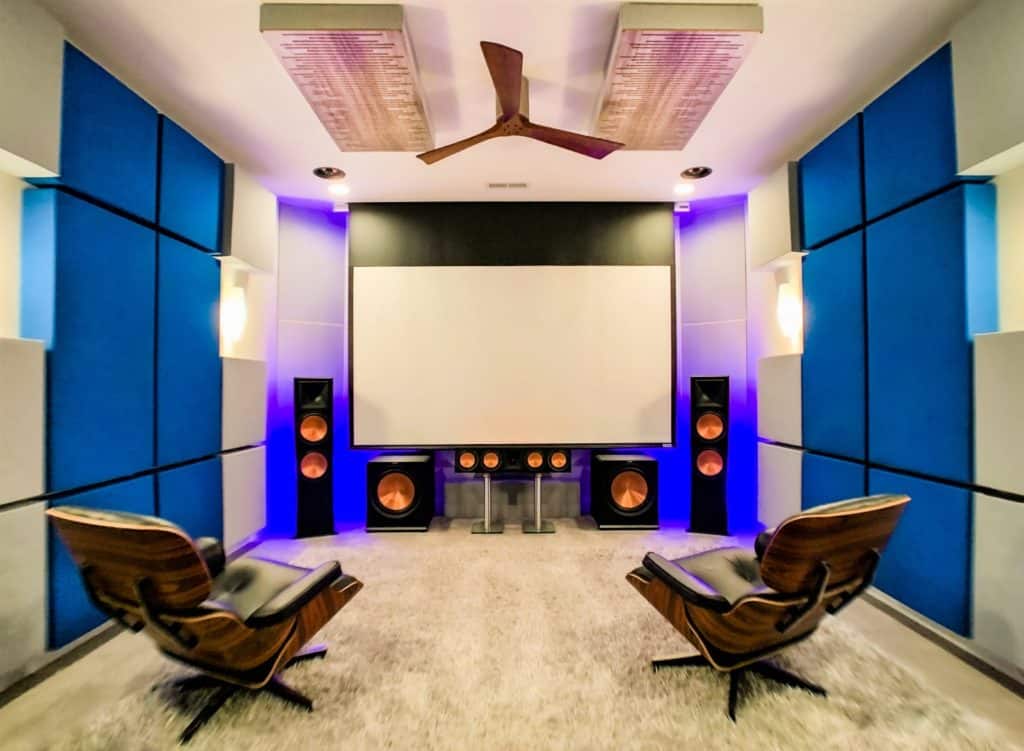
Gary Steel – What is a bass trap, Paul?
Paul Quilter – A bass trap is a device that reduces the amount of bass in a room at a particular frequency. The amount of bass energy reduction will depend on the size and amount of internal damping in the tube. A thin wall of cardboard about 5mm thick that is covered in a fabric to make it visually acceptable is the most easy to construct, but they can be made in a triangular shape to fit into corners too.
Would you like to support our mission to bring intelligence, insight and great writing to entertainment journalism? Help to pay for the coffee that keeps our brains working and fingers typing just for you. Witchdoctor, entertainment for grownups. Your one-off (or monthly) $5 or $10 donation will support Witchdoctor.co.nz. and help us keep producing quality content. It’s really easy to donate, just click the ‘Become a supporter’ button below.
Gary – Do all rooms need bass traps?
Paul – Not all rooms will need bass traps, as very large rooms have fewer bass problems in general than small rooms. As the room gets smaller and the more square the dimensions are, the worse the bass nodes will become. Rooms with dimensions that are equal multiples of each other are the worst. For example in New Zealand with a 2.4m ceiling height, a room that is 4.8m wide and 7.2m long would have very bad standing waves because all the dimensions are exact multiples of the height. There are ratios that are called The Golden Ratios which predict rooms that will have better sound, because the ratios minimise the problems of standing waves. A chart of some of these is shown below:

Gary – How do you know if you need them?
Paul – If your bass sounds very boomy and you can’t clearly hear individual bass notes, then you likely have a problem. “Walk the room” – Move around the room while playing bass-heavy music and listen for where the bass waves are strongest and where they are least strong. The difference between the weakest and strongest bass gives you a good idea of what the room is doing to the bass frequencies, whether it is augmenting or cancelling those frequencies and where in the room this is happening. It may be that you have your listening chair positioned exactly where the bass is the weakest and hence no amount of money spent on better gear will greatly change the sound at that point unless you do something to fix the cancellation issue. Conversely if you move into a corner or up against a wall the bass will increase markedly, so simply moving the sofa away from the wall a few hundred mm may well improve the sound considerably.
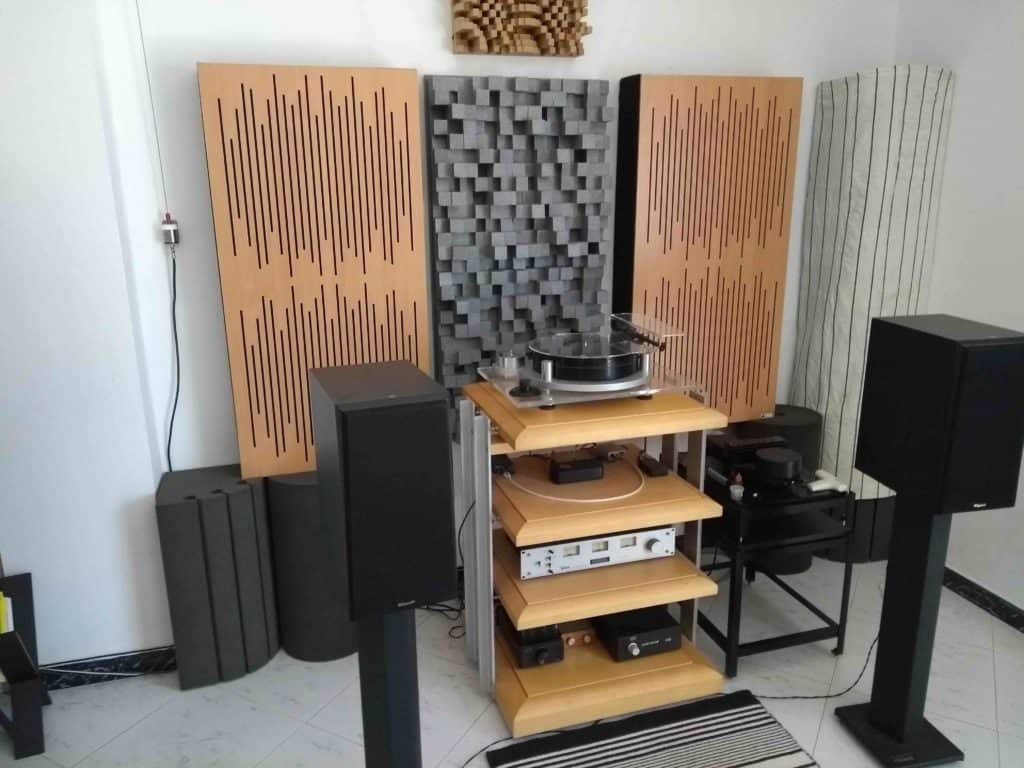
When a long, low-frequency wave reflects off, say, a wall, back onto itself, the original direct wave (from the vibrating source) and the reflected wave will combine. Each cycle of a wave consists of a (positive) peak (increase in air pressure, or compression (of air molecules), and a negative peak (or trough), a decrease of air pressure (rarefaction). Just as with electrical waves, when two positive peaks or two negative peaks coincide, they reinforce each other; but if a positive peak coincides with a negative peak, there’s a cancellation. Think of waves in the sea, but in all three dimensions and you get the idea of what is happening.
Gary – What are the different types of bass trap and benefits thereof?
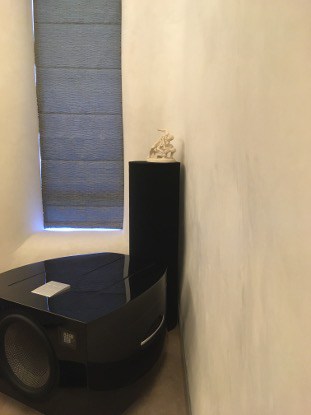
Paul – There are many styles and designs, but the simplest and most effective are simply cardboard tubes of around 300mm diameter that are cut to the right length and filled with dacron absorbent material.
In my purpose-built listening room, there are bass modes (albeit rather mild) at
36Hz, 70Hz, 80Hz and 112Hz.
Let’s focus on one, which is at 36Hz.
A 36Hz waveform has a length of 9.5555 metres. To trap it most efficiently you would have to make a tube that is as long as the waveform, which is not going to work in a room with a normal ceiling height!
The answer is to make a ¼ wave trap. A quarter of the 9.5555m wavelength is 2.388m, so my biggest trap (the one for the lowest 36Hz frequency) is that long.
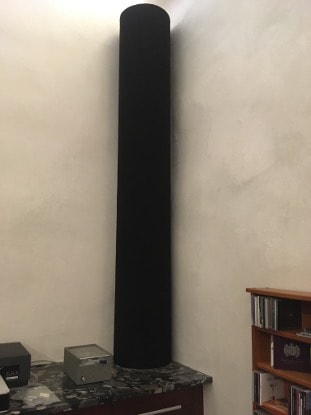
The smaller one above is built to trap 80Hz which has a 4.3m wavelength, so this ¼ wave bass trap is 1.075m tall.
Gary – Are they a nerdy high-end audiophile thing or can “normal” music consumers with a 2-channel stereo benefit from them?
Paul – Anybody can benefit from the use of bass traps if they have a problematic room. Whether they can get them past the significant other in the household is usually the bigger issue!
Gary – There are some very expensive bass traps around, but you’ve suggested that it’s possible to make your own with a bit of know-how. How do you figure out the exact nature of the problem and what to do about it? Is there an app for that?
Paul – There are many free apps that you can load onto your phone or tablet to do a very rough and ready analysis of your room. I use RTA. You will need a signal source that has test tones (also available on your phone) or a test signal that comprises all frequencies (white noise) – this is fed into your amp and you measure the output on another device such as your tablet. You will be able to see which frequencies are dominant in your room.
Gary – You mentioned in a social media post that “this is pure science” where there’s also a lot of smoke and mirrors and almost religious reverence about hi-fi. Can you explain a little bit of what the pure science is here? What measurements are involved?
Paul – The science is purely physics. Sound waves travel in a very predictable and mathematical manner. You can “see” the waves in a graphical way by using test equipment, but the skill comes in how that data is interpreted and what measures can be taken to address the issues that might be revealed. There are always going to be the snake oil salesmen who will sell a $50 tube covered in cloth for $500, but this is where some Kiwi ingenuity and DIY skills pay off.
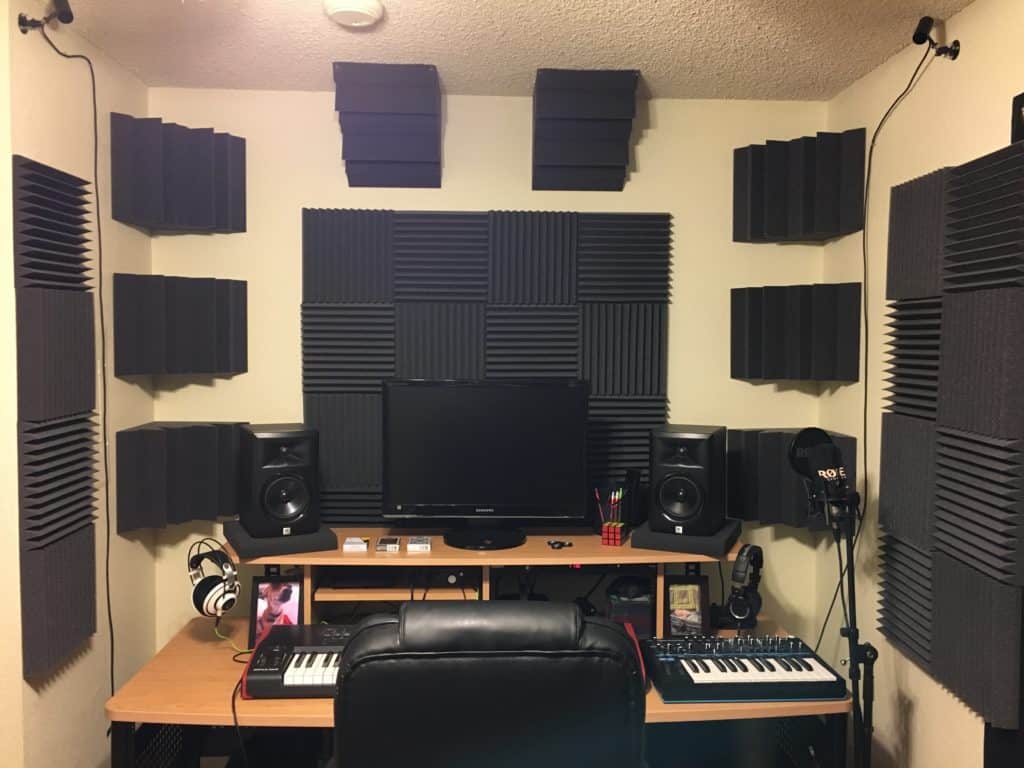
Gary – Can you show us yours (so to speak)?
Paul – Pictures attached of a couple of them.
My bass traps are made from – Cardboard tubes (formatubes used to create concrete pillars in the building industry) that are 300mm diameter, covered with Autex carpet & filled with dacron filling. You can see more info here.
Gary – I guess you’d need to be a bit technically proficient to figure all this out and make your own. Are there any commercial solutions that you would recommend?
Paul – There are hundreds of commercial options, but they cost a huge amount considering how simple they are to make. I can advise the dimensions for any required frequency. I recently helped a friend by designing some traps which he and his wife made up over a rainy weekend. He spent less than the freight cost of a single bass trap if he had bought it from an acoustics company and he got six of them!
Gary – Is there any other advice that you can give on the subject so that our readers can all aspire to get good, tight bass and get rid of the fat boom-boom wobblies once and for all?
Paul – Data is the key. If you do not have factual information at your fingertips then you are at risk of wasting a lot of time and money going round in circles. There are many sources, but universities and websites by acoustics engineers are a good starting point. I am happy to advise anybody who is willing to take the time and effort to do it properly. You can check out a crash course in acoustics online such as this one that is on YouTube – go to 8.42 minutes into the video for a visual of what these peaks and troughs look like in a typical room.
There are also a few very good acoustics engineers in NZ who are available for those who want the very best solution and are prepared to pay for top quality advice. I am happy to give advice depending on how serious end users want to get about fine-tuning their rooms for maximum performance.
- Paul Quilter is a respected hi-fi dealer who owns PQ Imports, which imports/distributes fine brands such as T+A from Germany, PrimaLuna valve amps, Cambridge Audio, MagnePlanar and ProAc loudspeakers, MoFi Electronics turntables, REL subwoofers and much more. www.pqimports.co.nz








